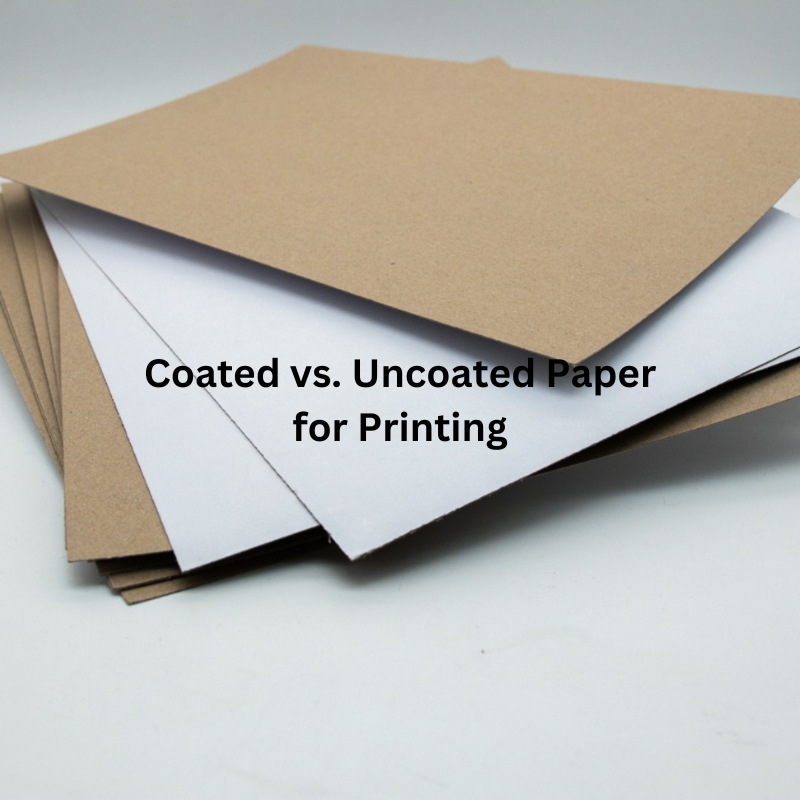فهم الاختلافات في الطباعة المزدوجة عالية الجودة: الورق المطلي مقابل الورق غير المطلي

حول أفضل ورق طباعة دوبلكس عالي الجودة على الكوكب والذي يُنصح به لكل من الطباعة بالصبغة تحت الحبر والطباعة بالحبر الصبغي المائي
العامل الأساسي الذي لا ينبغي إغفاله في الحصول على أفضل النتائج من الطباعة المزدوجة عالية الجودة هو استخدام ورق مطلي أو غير مطلي. كل نوع من الورق له نقاطه الفريدة والمميزة التي يمكن أن تؤثر بشكل كبير على نتيجة الطباعة النهائية، وخاصة في الورق المقوى المزدوج.
الورق المطلي له لمسة نهائية ناعمة ولامعة يتم تحقيقها من خلال طلاء الطين والمواد الأخرى على سطح الورق. لا يجعل هذا الطلاء الورق أكثر نعومة من ذي قبل فحسب، بل يوفر أيضًا الحماية التي تجعله أقل عرضة لتلوث الحبر. من ناحية أخرى، تفتقر الأوراق غير المطلية إلى مثل هذا الطلاء وتتطور إلى ملمس أكثر طبيعية.
إن الطباعة على جانبي الورقة تعزز هذا الاختلاف بين الورق المطلي وغير المطلي. إن إعادة إنتاج صورته ووضوح النص فيه أكثر وضوحًا بسبب سطحه الأملس، مما يجعله غالبًا خيارًا شائعًا للطباعة المزدوجة. كما يوفر الورق المطلي سعة عالية لاحتجاز الحبر، مما يمنع الحبر من الانتقال إلى الجانب الآخر من الورقة؛ وهذا يؤدي إلى مطبوعات مزدوجة أكثر نظافة وإشراقًا على كلا الجانبين.
ولكن من المهم أيضًا التفكير في الفوائد المحددة للورق غير المطلي، خاصة عندما يتعلق الأمر بالطباعة المزدوجة. قد لا يوفر الورق غير المطلي نفس وضوح الصورة والحيوية في اللون مثل الخيارات المطلية، ولكن امتصاصه العالي للحبر يوفر لمسة نهائية أكثر نعومة وغير لامعة. قد يكون هذا مرغوبًا بشكل خاص لتطبيقات معينة مثل مواد التغليف والترويج التي تتطلب سطحًا باهتًا أو محكمًا.
عند اختيار ورق مطبوع على كلا الجانبين (طباعة مزدوجة) على لوح ورق مزدوج، يجب عليك البحث عن بعض المتطلبات الحرجة اعتمادًا على المنتج الذي سيتم إنتاجه. كما ذكرنا، فإن الورق المطلي هو الأكثر تفضيلاً عندما يتعلق الأمر بالصور والرسومات عالية الدقة التي تتطلب دقة متناهية مع ألوان زاهية للغاية. قد يكون الورق غير المطلي أكثر ملاءمة للمشاريع الأكثر صرامة والتي تقدر التفاعل المادي أكثر في الحياة الواقعية مثل الكتيبات أو بطاقات العمل أو الدعوات.
بالإضافة إلى ذلك، يمكن أن يؤثر هذا القرار على مكونات أخرى لعملية الطباعة المزدوجة (أي وقت الجفاف وتماسك الحبر) بالإضافة إلى الجوانب المتعلقة بالمتانة. يسمح هذا باستخدام استراتيجيات تجفيف مختلفة لضمان أفضل جودة طباعة وعدم تلطيخ، خاصة لتطبيقات الطباعة المزدوجة. على الجانب الآخر من الورق المطلي، يمتص الورق غير المطلي الحبر بشكل مختلف وقد يتطلب تغييرات في كيفية وضع الحبر أو تجفيفه للحفاظ على نسيجه مع توفير أفضل النتائج لتصميمك.
ولكن مع الطباعة المزدوجة، الأمر ليس بهذه البساطة؛ إن اختيار الورق المطلي أو غير المطلي ليس بالأمر السهل للطباعة المزدوجة على قطع فنية ذات وجهين. كل نوع من الورق له مزاياه ومقايضاته، والتي يمكن أن تؤثر بشكل كبير على نتيجة الطباعة النهائية. يمكن للمصممين والمطابعين الذين يعرفون الاختلافات اتخاذ قرارات مستنيرة حول ما قد يكون ضروريًا وما لا يكون ضروريًا لمشروع ما، وتقديم نتائج عالية الجودة في الطباعة المزدوجة التي لا مثيل لها – كل مهمة مخصصة لها متطلبات فريدة.

